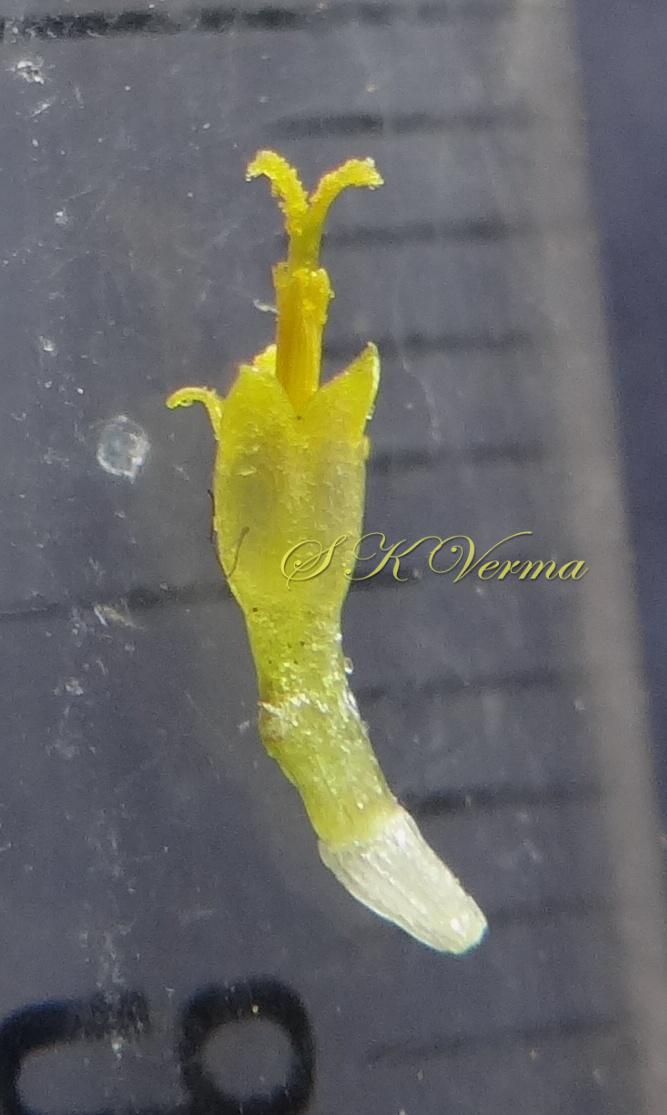CHRYSANTHEMUM
Chrysanthemum
L., Sp. Pl. 2: 887. 1753; Gen. Pl. ed. 5: 379. 1754; Shi et al., Fl. China @ eFloras.org 20-21: 669; Fl. Pak. @ eFloras.org p. 45.
Subshrubs or perennial herbs; indumentum absent or of basifixed or medifixed hairs. Leaves alternate, pinnately or palmately divided, serrate or rarely entire. Synflorescence a lax irregular terminal cyme, often reduced to solitary capitulum. Capitula heterogeneous, radiate, laxly corymbose or solitary. Involucres cup-shaped, rarely campanulate. Phyllaries in 2-5 series, 1-many nerved, imbricate, scarious, margin white, brown or dark brown; outer and middle ones herbaceous and pinnatilobed or pinnatifid. Receptacle convex to conical, epaleate. Ray florets female, fertile, in 1 or many rows (in cultivars); limb yellow, white or red, 2-3-fid at apex. Disc florets many, bisexual, fertile, tubular. Corolla yellow, tubular, tubes laterally expanded, 5-lobed, lobes with central resin sacs. Anthers obtuse at base; apical appendage lanceolate-ovate or narrowly elliptic. Cypselae dimorphic and sometimes compressed, thick-walled. Ray cypselae triquetrous or winged. Disc cypselae mostly laterally flattened, narrowly winged adaxially or cylindrical, 10-ribbed or angular. All epaleate, subterete or obovoid. Pappus absent.
36 species
Chrysanthemum x morifolium
Chrysanthemum x morifolium
(Ramat.) Hemsl., Gard. Chron., ser. 3.6: 586. 1889.
Terrestrial, perennial herbs or subshrubs, usually up to 1 m tall, slightly woody at base; indumentum absent. Stem upright with support, tomentose, branched. Stipules entire, bi-, tri-or multifid, tomentose; sometimes stipules absent. Leaves aromatic, alternate, 3-8 cm x 2-6 cm; usually petiolate, 1-2 cm long, narrowly winged; leaf blade broadly ovate in outline, pinnatifid or pinnatipartite, 5-lobed, ultimate margins dentate, leaf base attenuate, subcordate to cordate, leaf surfaces puberulent, pubescent or tomentose. Capitula solitary terminal and/ or axillary, few to many arranged in corymbiform arrays; sometimes capitula solitary terminal; peduncles up to 5 cm long, tomentose. Capitula 2.5-8+ cm across, of various colours from white, yellow, orange, rust, bronze, pink, red, purple, lavender or of mixed shades, usually radiate. Involucre cup-shaped, +/- 2 cm in diameter; phyllaries many, 3-4-seriate, 5-10 mm x 1-5 mm, outer series with usually linear or linear-lanceolate phyllaries, phyllaries of inner series usually oblong or broadly oblong-ovate, margin scarious, white or brown; phyllaries abaxially glabrous to tomentose. Receptacle convex to conic, pitted, epaleate. Ray florets: Many, 1-many-seriate, female, fertile. Corolla ligulate; limb 2-4 cm x 0.3-0.8 cm, oblong or elliptic, apex usually 3- toothed; tube short, 2-5 mm long. Ovary (0-) 1-1.5 mm; style bifid. Disc florets: Numerous, ca. 1 cm long, bisexual, tubular. Corolla funnelform; tube laterally expanded, ca. 2 mm long; limb 5-lobed, lobes ca. 7 mm long, deltate. Anthers obtuse at base; apical appendages lanceolate-ovate or narrowly elliptic. Ovary 1-1.5 mm long; style 4-5 mm long, bifid. Cypselae dimorphic and sometimes compressed, thick walled: those of ray florets triquetrous or winged; of disc florets mostly laterally flattened, narrowly winged adaxially or cylindrical, 10-ribbed or angular. Pappus absent.
Common Names: Garden Mum, Florist’s Chrysanthemum, Chrysanthemum, Gul-e-daudi
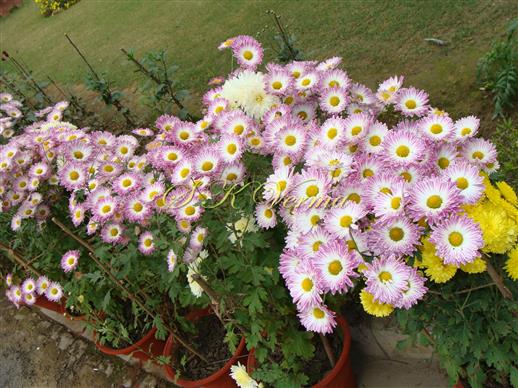
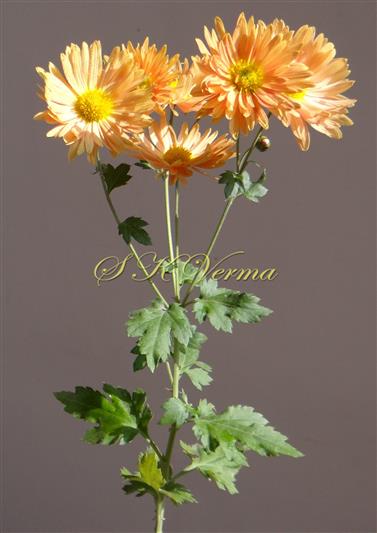
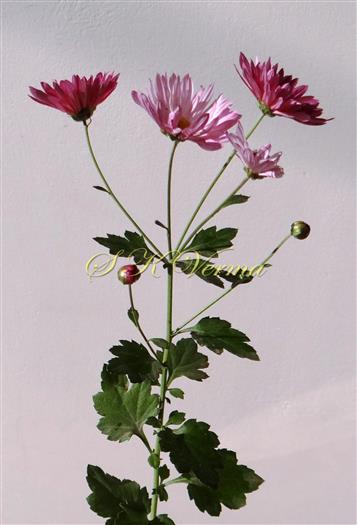
-DSC09195.jpg)
-DSC09194.jpg)
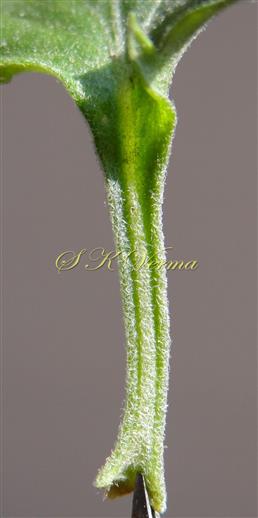

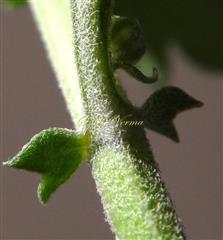
.jpg)
.jpg)
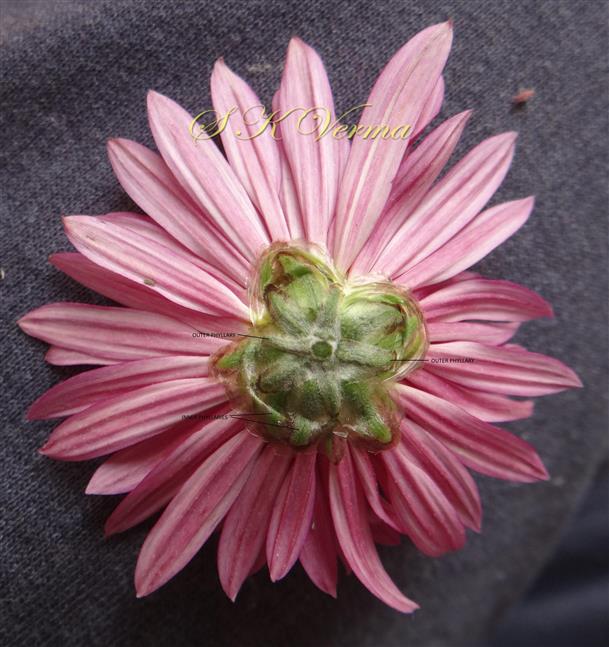
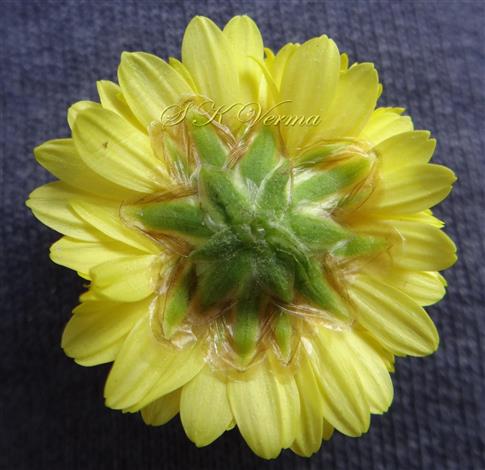
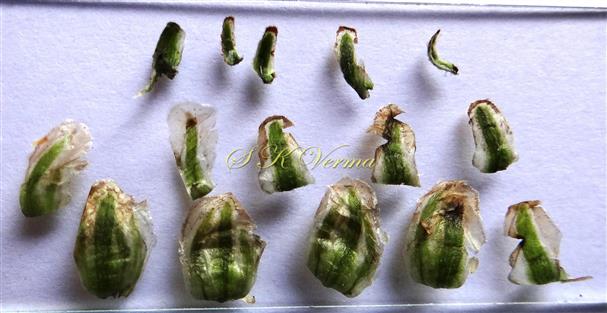
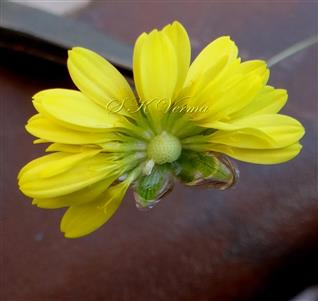
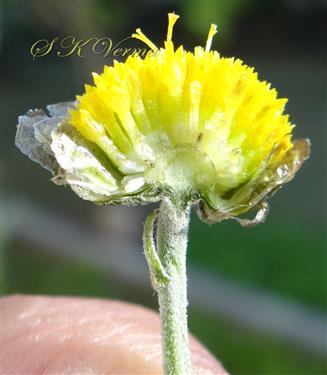
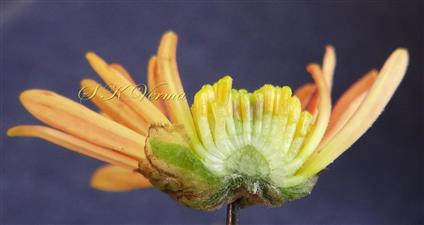

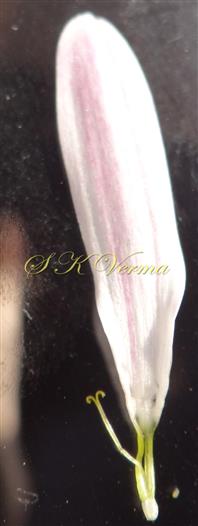
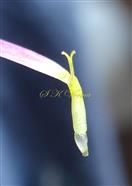




-DSC09195.jpg)
-DSC09194.jpg)

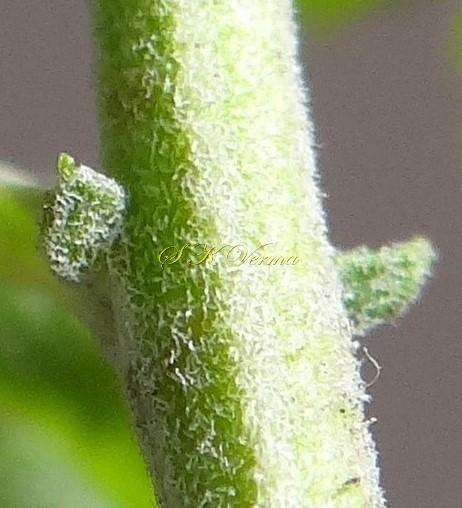

.jpg)
.jpg)






